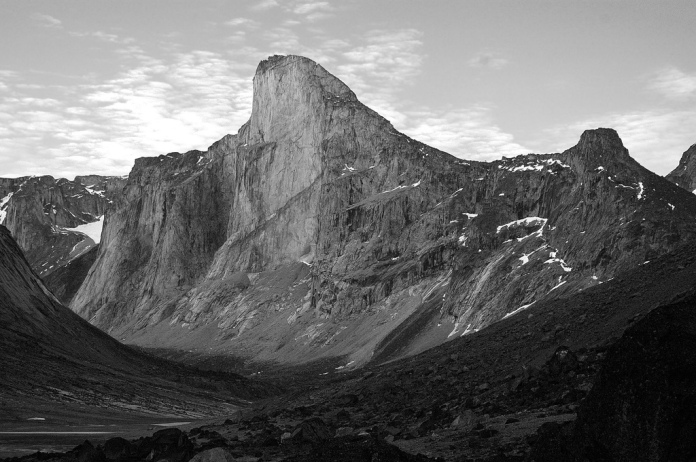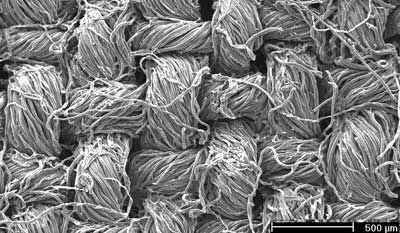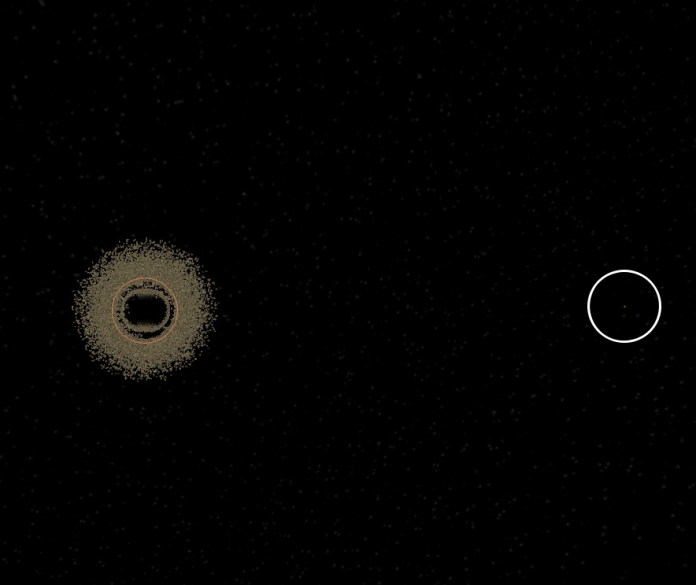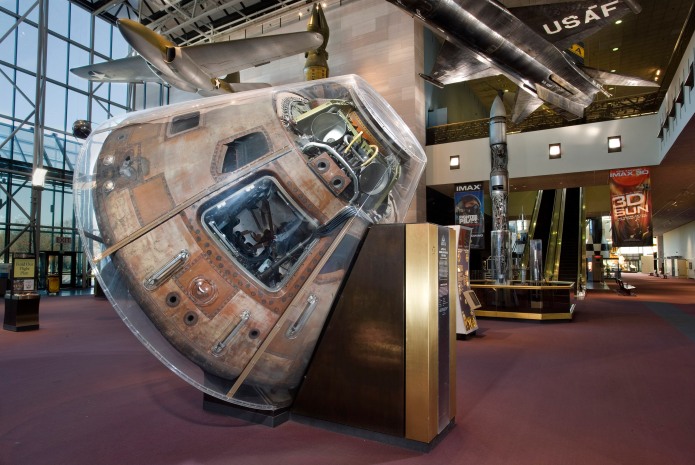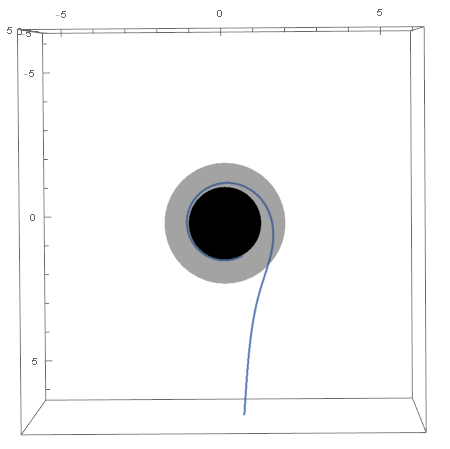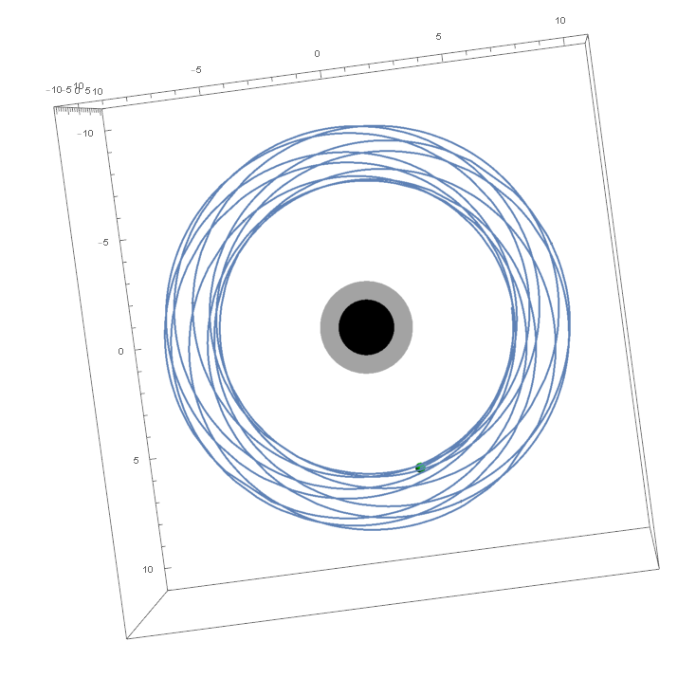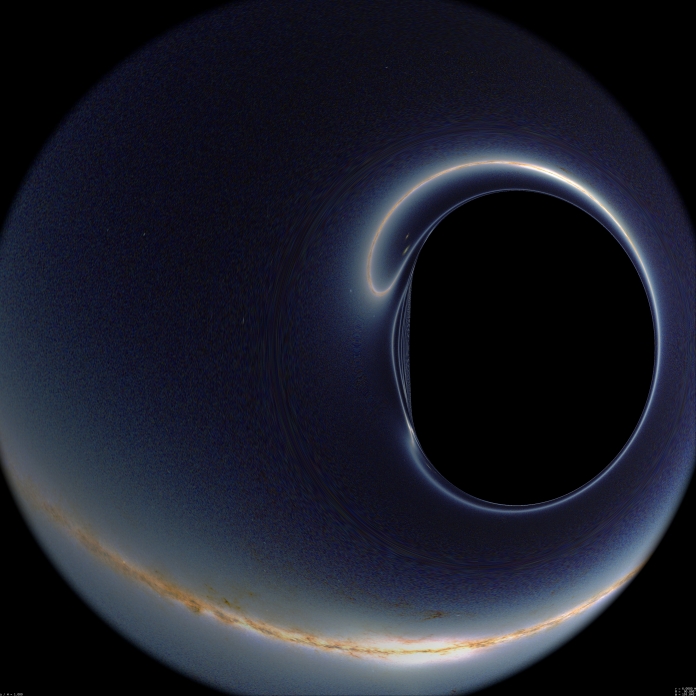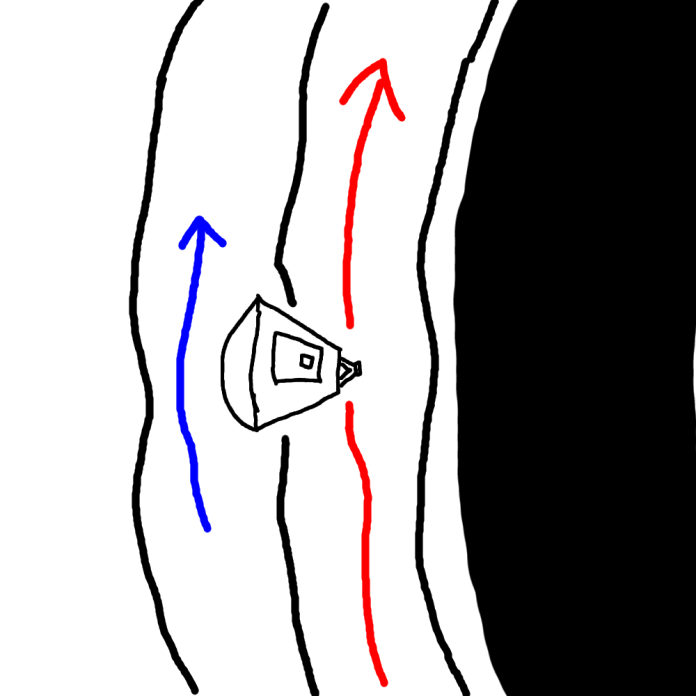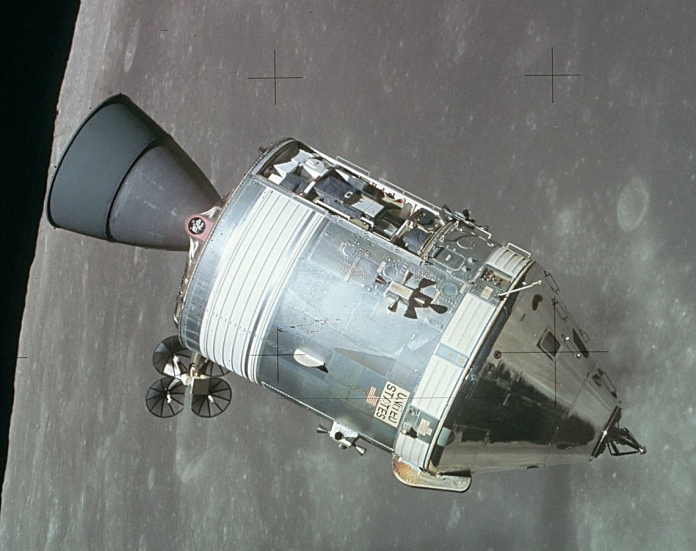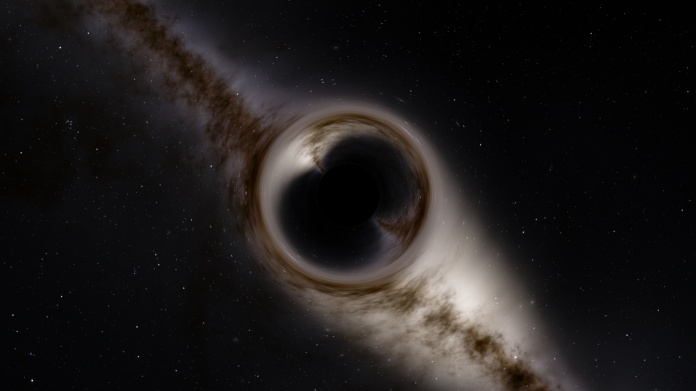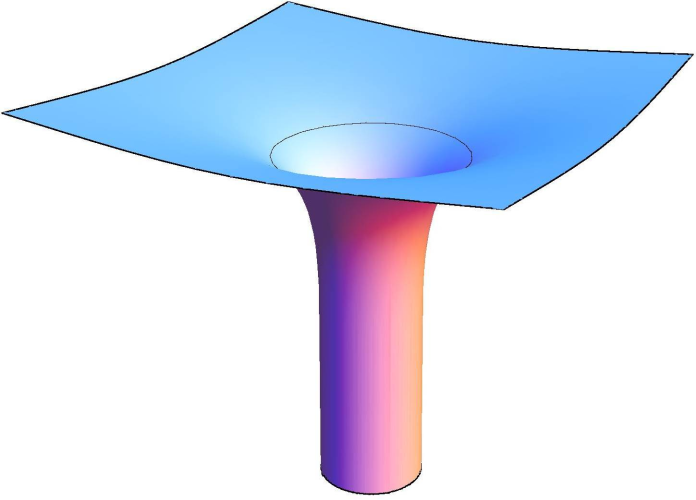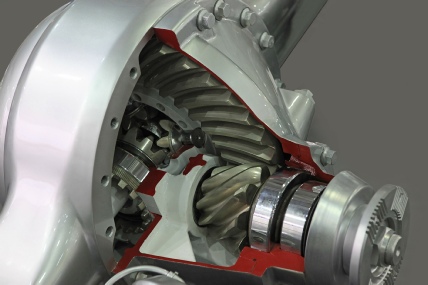I have to preface this article by saying that yes, I know I’m hardly the first person to consider this question.
I also have to add that, according to current physics (as of this writing in December 2017), the Sun won’t ever go supernova. It’s not massive enough to produce supernova conditions. But hey, I’ll gladly take any excuse to talk about supernovae, because supernovae are the kind of brain-bending, scary-as-hell, can’t-wrap-your-feeble-meat-computer-around-it events that make astronomy so creepy and amazing.
So, for the purposes of this thought experiment, let’s say that, at time T + 0.000 seconds, all the ingredients of a core-collapse supernova magically appear at the center of the Sun. What would that look like, from our point of view here on Earth? Well, that’s what I’m here to find out!
From T + 0.000 seconds to 499.000 seconds
This is the boring period where nothing happens. Well, actually, this is the nice period where life on Earth can continue to exist, but astrophysically, that’s pretty boring. Here’s what the Sun looks like during this period:

Pretty much normal. Then, around 8 minutes and 19 seconds (499 seconds) after the supernova, the Earth is hit by a blast of radiation unlike anything ever witnessed by humans.
Neutrinos are very weird, troublesome particles. As of this writing, their precise mass isn’t known, but it’s believed that they do have mass. And that mass is tiny. To get an idea of just how tiny: a bacterium is about 45 million times less massive than a grain of salt. A bacterium is 783 billion times as massive as a proton. Protons are pretty tiny, ghostly particles. Electrons are even ghostlier: 1836 times less massive than a proton. (In a five-gallon / 19 liter bucket of water, the total mass of all the electrons is about the mass of a smallish sugar cube; smaller than an average low-value coin.)
As of this writing (December 2017, once again), the upper bound on the mass of a neutrino is 4.26 million times smaller than the mass of an electron. On top of that, they have no electric charge, so the only way they can interact with ordinary matter is by the mysterious weak nuclear force. They interact so weakly that (very approximately), out of all the neutrinos that pass through the widest part of the Earth, only one in 6.393 billion will collide with an atom.
But, as XKCD eloquently pointed out, supernovae are so enormous and produce so many neutrinos that their ghostliness is canceled out. According to XKCD’s math, 8 minutes after the Sun went supernova, every living creature on Earth would absorb something like 21 Sieverts of neutrino radiation. Radiation doses that high have a 100% mortality rate. You know in Hollywood how they talk about the “walking ghost” phase of radiation poisoning? Where you get sick for a day or two, and then you’re apparently fine until the effects of the radiation catch up with you and you die horribly? At 21 Sieverts, that doesn’t happen. You get very sick within seconds, and you get increasingly sick for the next one to ten days or so, and then you die horribly. You suffer from severe vomiting, diarrhea, fatigue, confusion, fluid loss, fever, cardiac complications, neurological complications, and worsening infections as your immune system dies. (If you’re brave and have a strong stomach, you can read about what 15-20 Sieverts/Gray did to a poor fellow who was involved in a radiation accident in Japan. It’s NSFW. It’s pretty grisly.)
But the point is that we’d all die when the neutrinos hit. I’m no religious scholar, but I think it’d be appropriate to call the scene Biblical. It’d be no less scary than the scary-ass shit that happens in in Revelation 16. (In the King James Bible, angels pour out vials of death that poison the water, the earth, and the Sun, and people either drop dead or start swearing and screaming.) In our supernova Armageddon, the air flares an eerie electric blue from Cherenkov radiation, like this…
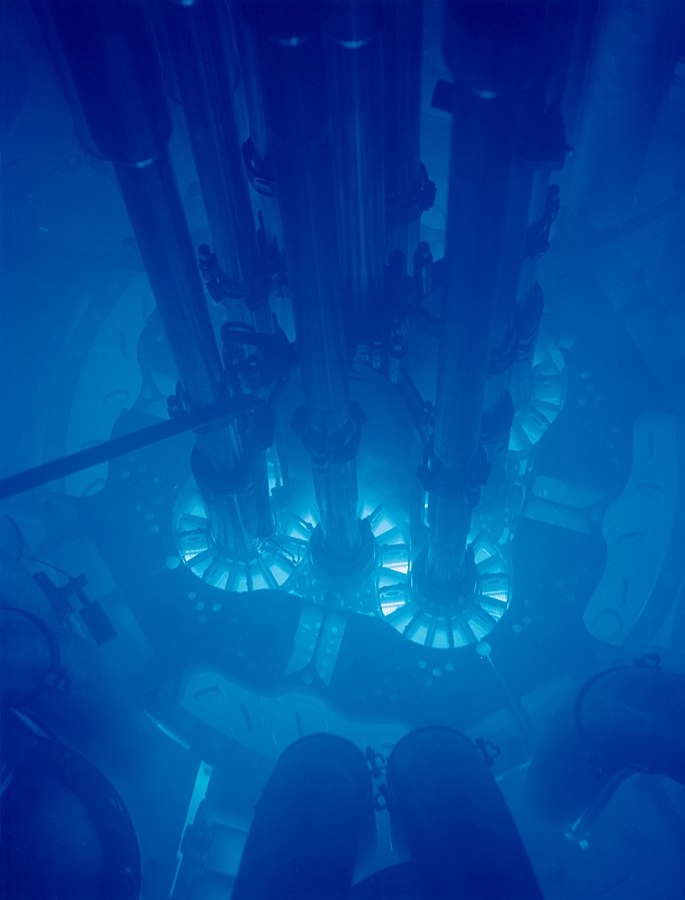
(Source.)
…and a few seconds later, every creature with a central nervous system starts convulsing. Every human being on the planet starts explosively evacuating out both ends. If you had a Jupiter-sized bunker made of lead, you’d die just as fast as someone on the surface. In the realm of materials humans can actually make, there’s no such thing as neutrino shielding.
But let’s pretend we can ignore the neutrinos. We can’t. They contain 99% of a supernova’s energy output (which is why they can kill planets despite barely interacting with matter). But let’s pretend we can, because otherwise, the only spectators will be red, swollen, feverish, and vomiting, and frankly, I don’t need any new nightmares.
T + 499.000 seconds to 568.570 seconds (8m13s to 9m28.570s)
If we could ignore the neutrino radiation (we really, really can’t), this would be another quiet period. That’s kinda weird, considering how much energy was just released. A typical supernova releases somewhere in the neighborhood of 1 × 10^44 Joules, give or take an order of magnitude. The task of conveying just how much energy that is might be beyond my skills, so I’m just going to throw a bunch of metaphors at you in a panic.
According to the infamous equation E = m c^2, 10^44 Joules would mass 190 times as much as Earth. The energy alone would have half the mass of Jupiter. 10^44 Joules is (roughly) ten times as much energy as the Sun will radiate in its remaining 5 billion years. If you represented the yield of the Tsar Bomba, the largest nuclear device ever set off, by the diameter of a human hair, then the dinosaur-killing (probably) Chicxulub impact would stretch halfway across a football field, Earth’s gravitational binding energy (which is more or less the energy needed to blow up the planet) would reach a third of the way to the Sun, and the energy of a supernova would reach well past the Andromeda galaxy. 1 Joule is about as much energy as it takes to pick up an egg, a golf ball, a small apple, or a tennis ball (assuming “pick up” means “raise to 150 cm against Earth gravity.”) A supernova releases 10^44 of those Joules. If you gathered together 10^44 water molecules, they’d form a cube 90 kilometers on an edge. It would reach almost to the edge of space. (And it would very rapidly stop being a cube and start being an apocalyptic flood.)
Screw it. I think XKCD put it best: however big you think a supernova is, it’s bigger than that. Probably by a factor of at least a million.
And yet, ignoring neutrino radiation (we still can’t do that), we wouldn’t know anything about the supernova until nine and a half minutes after it happened. Most of that is because it takes light almost eight and a quarter minutes to travel from Sun to Earth. But ionized gas is also remarkably opaque to radiation, so when a star goes supernova, the shockwave that carries the non-neutrino part of its energy to the surface only travels at about 10,000 kilometers per second. That’s slow by astronomical standards, but not by human ones. To get an idea of how fast 10,000 kilometers per second is, let’s run a marathon.
At the same moment, the following things leave the start line: Usain Bolt at full sprint (10 m/s), me in my car (magically accelerating from 0 MPH to 100 MPH in zero seconds), a rifle bullet traveling at 1 kilometer per second (a .50-caliber BMG, if you want to be specific), the New Horizons probe traveling at 14 km/s (about as fast as it was going when it passed Pluto), and a supernova shockwave traveling at 10,000 km/s.
Naturally enough, the shockwave wins. It finishes the marathon (which is roughly 42.195 kilometers) in 4.220 milliseconds. In that time, New Horizons makes it 60 meters. The bullet has traveled just under 14 feet (422 cm). My car and I have traveled just over six inches (19 cm). Poor Usain Bolt probably isn’t feeling as speedy as he used to, since he’s only traveled an inch and a half (4.22 cm). That’s okay, though: he’d probably die of exhaustion if he ran a full marathon at maximum sprint. And besides, he’s about to be killed by a supernova anyway.
T + 569 seconds
If you’re at a safe distance from a supernova (which is the preferred location), the neutrinos won’t kill you. If you don’t have a neutrino detector, when a supernova goes off, the first detectable sign is the shock breakout: when the shockwave reaches the star’s surface. Normally, it takes in the neighborhood of 20 hours before the shock reaches the surface of its parent star. That’s because supernovas (at least the core-collapse type we’re talking about) usually happen inside enormous, bloated supergiants. If you put a red supergiant where the Sun is, then Jupiter would be hovering just above its surface. They’re that big.
The Sun is much smaller, and so it only takes a couple minutes for the shock to reach the surface. And when it does, Hell breaks loose. There’s a horrific wave of radiation trapped behind the opaque shock. When it breaks out, it heats it to somewhere between 100,000 and 1,000,000 Kelvin. Let’s split the difference and say 500,000 Kelvin. A star’s luminosity is determined by two things: its temperature and its surface area. At the moment of shock breakout, the Sun has yet to actually start expanding, so its surface area remains the same. Its temperature, though, increases by a factor of almost 100. Brightness scales in proportion to the fourth power of temperature, so when the shock breaks out, the Sun is going to shine something like 56 million times brighter. Shock breakout looks something like this:
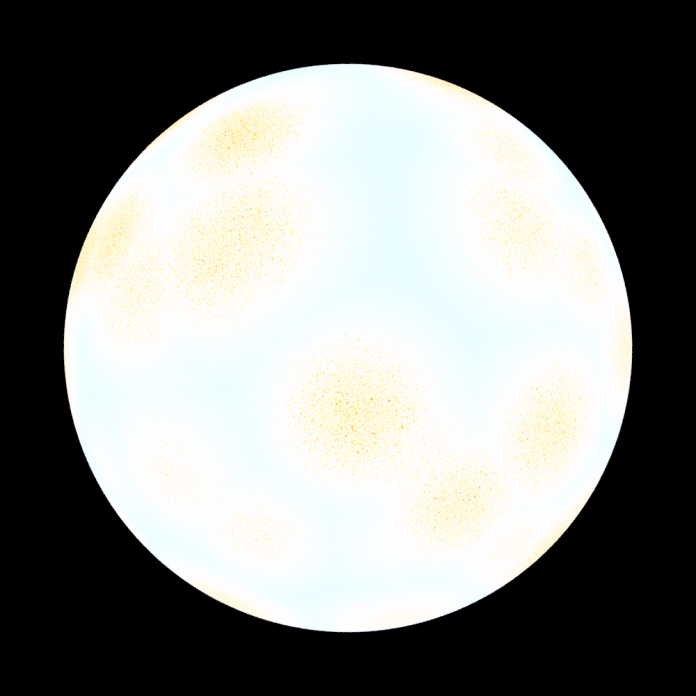
But pretty soon, it looks like this:

Unsurprisingly, this ends very badly for everybody on the day side. Pre-supernova, the Earth receives about 1,300 watts per square meter. Post-supernova, that jumps up to 767 million watts per square meter. To give you some perspective: that’s roughly 700 times more light than you’d be getting if you were currently being hit in the face by a one-megaton nuclear fireball. Once again: However big you think a supernova is, it’s bigger than that.
All the solids, liquids, and gases on the day side very rapidly start turning into plasma and shock waves. But things go no better for people on the night side. Let’s say the atmosphere scatters or absorbs 10% of light after passing through its 100 km depth. That means that, after passing through one atmosphere-depth, 90% of the light remains. Since the distance, across the Earth’s surface, to the point opposite the sun is about 200 atmosphere-depths, that gives us an easy equation for the light on the night side: [light on the day side] * (0.9)^200. (10% is approximate. After searching for over an hour, I couldn’t find out exactly how much light the air scatters, and although there are equations for it, I was getting a headache. Rayleigh scattering is the relevant phenomenon, if you’re looking for the equations to do the math yourself).
On the night side, even after all that atmospheric scattering, you’re still going to burn to death. You’ll burn to death even faster if the moon’s up that night, but even if it’s not, enough light will reach you through the atmosphere alone that you’ll burn either way. If you’re only getting light via Rayleigh scattering, you’re going to get something like 540,000 watts per square meter. That’s enough to set absolutely everything on fire. It’s enough to heat everything around you to blowtorch temperatures. According to this jolly document, that’s enough radiant flux to give you a second-degree burn in a tenth of a second.
T + 5 minutes to 20 minutes
We live in a pretty cool time, space-wise. We know what the surfaces of Pluto, Vesta, and Ceres look like. We’ve landed a probe on a comet. Those glorious lunatics at SpaceX just landed a booster that had already been launched, landed, and refurbished once. And we’ve caught supernovae in the act of erupting from their parent stars. Here’s a graph, for proof:
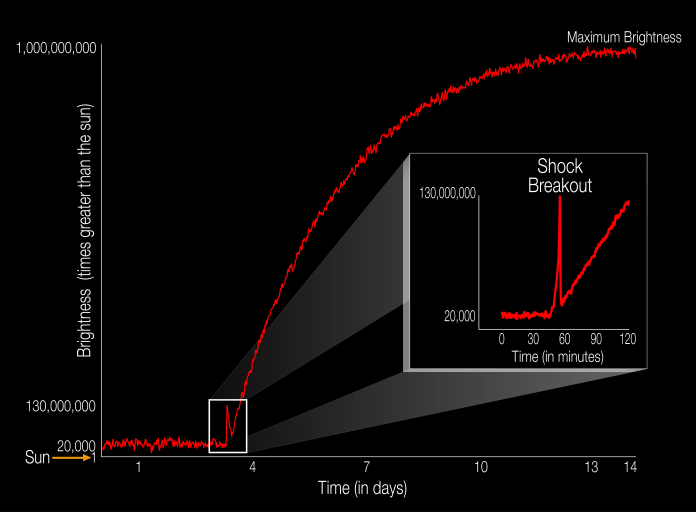
(Source. Funnily enough, the data comes from the awesome Kepler planet-hunting telescope.)
The shock-breakout flash doesn’t last very long. That’s because radiant flux scales with the fourth power of temperature, so if something gets ten times hotter, it’s going to radiate ten thousand times as fast, which means, in a vacuum, it’s going to cool ten thousand times faster (without an energy source). So, that first bright pulse is probably going to last less than an hour. But during that hour, the Earth’s going to absorb somewhere in the neighborhood of 3×10^28 Joules of energy, which is enough to accelerate a mass of 4.959×10^20 kg. to escape velocity. In other words: that sixty-minute flash is going to blow off the atmosphere and peel off the first 300 meters of the Earth’s crust. Still better than a grisly death by neutrino poisoning.
T + 20 minutes to 4 hours
This is another period during which things get better for a little while. Except for the fact that pretty much everything on the Earth’s surface is either red-hot or is now part of Earth’s incandescent comet’s-tail atmosphere, which contains, the plants, the animals, most of the surface, and you and me. “Better” is relative.
It doesn’t take long for the shock-heated sun to cool down. The physics behind this is complicated, and I don’t entirely understand it, if I’m honest. But after it cools, we’re faced with a brand-new problem: the entire mass of the sun is now expanding at between 5,000 and 10,000 kilometers per second. And its temperature only cools to something like 6,000 Kelvin. So now, the sun is growing larger and larger and larger, and it’s not getting any cooler. We’re in deep dookie.
Assuming the exploding sun is expanding at 5,000 km/s, it only takes two and a quarter minutes to double in size. If it’s fallen back to its pre-supernova temperature (which, according to my research, is roughly accurate), that means it’s now four times brighter. Or, if you like, it’s as though Earth were twice as close. Earth is experiencing the same kind of irradiance that Mercury once saw. (Mercury is thoroughly vaporized by now.)
In 6 minutes, the Sun has expanded to four times its original size. It’s now 16 times brighter. Earth is receiving 21.8 kilowatts per square meter, which is enough to set wood on fire. Except that there’s no such thing as wood anymore, because all of it just evaporated in the shock-breakout flash.
At sixteen and a quarter minutes, the sun has grown so large that, even if you ignored the earlier disasters, the Earth’s surface is hot enough to melt aluminum.
The sun swells and swells in the sky. Creepy mushroom-shaped plumes of radioactive nickel plasma erupt from the surface. The Earth’s crust, already baked to blackened glass, glows red, then orange, then yellow. The scorched rocks melt and drip downslope like candle wax. And then, at four hours, the blast wave hits. If you thought things couldn’t get any worse, you haven’t been paying attention.
T + 4 hours
At four hours, the rapidly-expanding Sun hits the Earth. After so much expansion, its density has decreased by a factor of a thousand, or thereabouts. Its density corresponds to about the mass of a grain of sand spread over a cubic meter. By comparison, a cubic meter of sea-level air contains about one and a quarter kilograms.
But that whisper of hydrogen and heavy elements is traveling at 5,000 kilometers per second, and so the pressure it exerts on the Earth is shocking: 257,000 PSI, which is five times the pressure it takes to make a jet of abrasive-laden water cut through pretty much anything (there’s a YouTube channel for that). The Earth’s surface is blasted by winds at Mach 600 (and that’s relative to the speed of sound in hot, thin hydrogen; relative to the speed of sound in ordinary air, it’s Mach 14,700). One-meter boulders are accelerated as fast as a bullet in the barrel of a gun (according to the formulae, at least; what probably happens is that they shatter into tiny shrapnel like they’ve been hit by a gigantic sledgehammer). Whole hills are blown off the surface. The Earth turns into a splintering comet. The hydrogen atoms penetrate a full micron into the surface and heat the rock well past its boiling point. The kinetic energy of all that fast-moving gas delivers 10^30 watts, which is enough to sand-blast the Earth to nothing in about three minutes, give or take.
T + 4 hours to 13h51m
And the supernova has one last really mean trick up its sleeve. If a portion of the Earth survives the blast (I’m not optimistic), then suddenly, that fragment’s going to find itself surrounded on all sides by hot supernova plasma. That’s bad news. There’s worse news, though: that plasma is shockingly radioactive. It’s absolutely loaded with nickel-56, which is produced in huge quantities in supernovae (we’re talking up to 5% of the Sun’s mass, for core-collapse supernovae). Nickel-56 is unstable. It decays first to radioactive cobalt-56 and then to stable iron-56. The radioactivity alone is enough to keep the supernova glowing well over a million times as bright as the sun for six months, and over a thousand times as bright as the sun for over two years.
A radiation dose of 50 Gray will kill a human being. The mortality rate is 100% with top-grade medical care. The body just disintegrates. The bone marrow, which produces the cells we need to clot our blood and fight infections, turns to blood soup. 50 Gray is equivalent to the deposition of 50 joules of radiation energy per kilogram. That’s enough to raise the temperature of a kilo of flesh by 0.01 Kelvin, which you’d need an expensive thermometer to measure. Meanwhile, everything caught in the supernova fallout is absorbing enough radiation to heat it to its melting point, to its boiling point, and then to ionize it to plasma. A supernova remnant is insanely hostile to ordinary matter, and doubly so to biology. If the Earth hadn’t been vaporized by the blast-wave, it would be vaporized by the gamma rays.
And that’s the end of the line. There’s a reason astronomers were so shocked to discover planets orbiting pulsars: pulsars are born in supernovae, and how the hell can a planet survive one of those?

